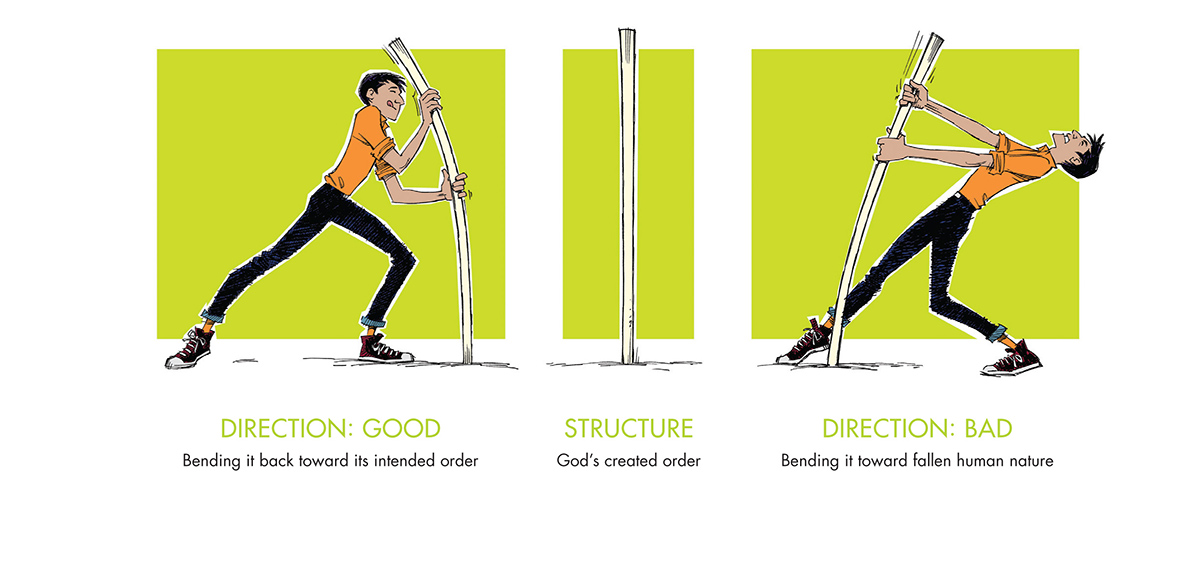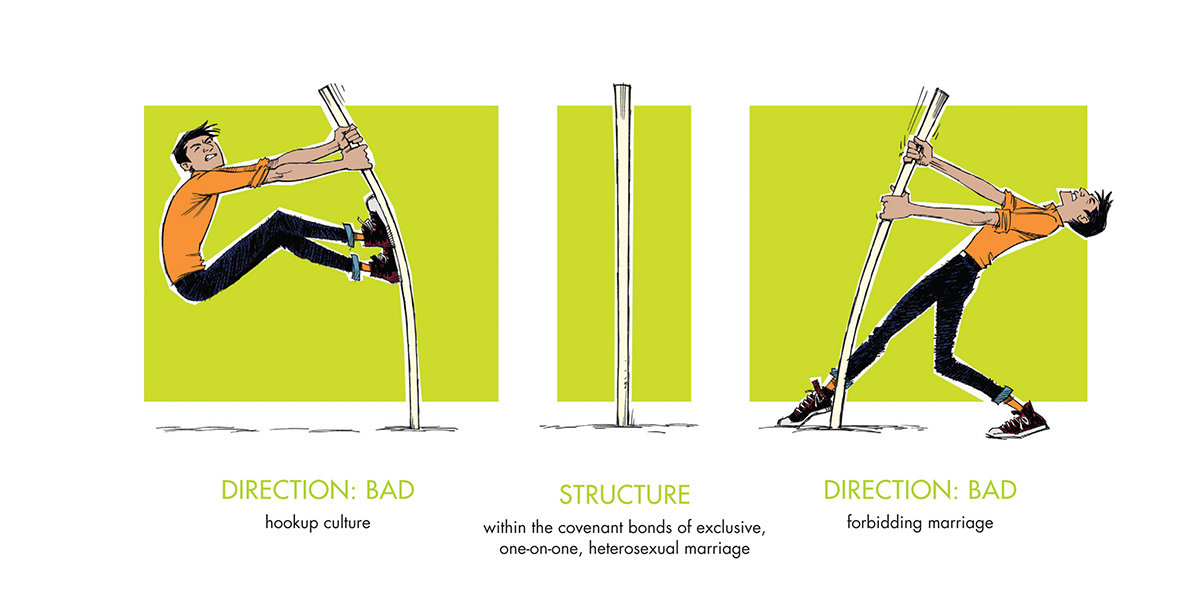
Some Christian educators watch with concern as students finish a “Christian worldview education.” They observe that sometimes these students are too quick to label ideas such as feminism and Marxism in order to dismiss them without engaging with understanding.
This can be a real problem. If students fail to understand ideas that they don’t agree with, they won’t be able to communicate thoughtfully about false worldviews. But what can we do to help them think biblically about distorted worldviews?
The problem is not with worldview education but with how worldview is taught. Worldview education must go beyond rote memorization of charts with categories. Instead, students must be taught to analyze from the correct biblical perspective (i.e., through the lens of Creation, Fall, and Redemption). Only then will they be able to evaluate precisely how false worldviews twist God’s good design.
One way to represent Creation, Fall, Redemption is to illustrate it with the terms structure (God’s creational norms) and direction (bending God’s norms in a fallen direction or bending fallen direction back towards God’s creational design). In other words, children must understand how creational norms and sinful direction work in the formation of wrong ideas.
Creational Norms
We teach our children in order to impart wisdom to them, but where can wisdom be found? It begins when our children fear the Lord by submitting to His wisdom rather than embracing evil (Prov. 9:10). God reveals His wisdom in Scripture, but Scripture also directs us to observe God’s wise design in creation (Ps. 19:1; Prov. 8:22–31).God created His world to work in a certain way—according to His blueprint of wisdom. So paying attention to how God created the world to work in the beginning reveals principles for living according to His wise design in the present. These principles can be called “creational norms” because they were present at creation.
There are creational norms for marriage (Matt. 19:4–8), economics (Exod. 20:9; 2 Thess. 3:11–12), science (Gen. 8:22), and every other facet of life (Isa. 28:24–29). In some areas, we have direct comment from God’s Word. Others come through careful observation of creation.
Sinful Direction
Of course, each of us is corrupted by the Fall. We inevitably bend God’s creational norms in a way that suits our sinful ways. Some people push against the norms a little and some push a lot. In every case, sinners think of their vision of bent norms as correct and natural. While false worldviews can’t completely ignore creational norms, they bend those norms to fit their vision for individuals and society. The creational norms are still present but in a twisted state.
Redemptive Direction
The challenge for believers is discerning between what part of the sinner’s vision is creational and what part is sinful direction. Christians have an obligation to identify creational norms. Of course, we’re going to engage with many ideas that push these norms in a bad direction. Some of these bad directions have been codified into law and large institutions.
When we encounter these norms, bent in a sinful direction, we should seek to live faithfully in light of redemption by pushing back in a redemptive direction, that is, back toward their creational state.
The Case of Marriage
Creational Norm
A discussion of creational norms and sinful direction is difficult to understand without an example. So let’s examine marriage as an illustration of how these principles work out. God created marriage when He made humans male and female. He even gave us a direct word on what marriage should look like in Genesis 2:23–24. This passage outlines the creational norm for marriage.
Fallen Direction
Very quickly after the fall, people started bending marriage in various sinful directions. Polygamy and serial divorce were and continue to be serious examples of bending marriage in a sinful direction.
 Redemptive Direction
Redemptive Direction
When God graciously gave his people the law, He pressed them towards the creational norm. We might have predicted that He would ban divorce, but He didn’t. He regulated it very strictly (Deuteronomy 24:1–5). God put in place legal protections for women being divorced by their husbands.
God still hates divorce; Jesus made that clear. But He understood that the people were evil and were going to divorce, so He established laws that protected a woman when a husband decides to divorce.
Reformation
When the Lord graciously gave Israel laws, He modeled a reformational approach to creational norms that has been twisted by the Fall. In a civil setting, He moved His people towards His creational norms without legally requiring something they would not do. To be clear, God calls us to take radical action against personal sin. But in the civil setting, His laws guided His people like children to make reasonable steps toward the norm.
Reformation requires nuance and understanding of the creational norms and the false worldview. Only then can we discern a corrective step that doesn’t create the chaos that comes with radical measures.
Effective Worldview Education
When we teach our children science, history, math, and literature, we want them to develop skills in finding creational norms. As our children grow, they need to learn to understand and evaluate false worldviews that twist creational norms. Finally, our children need to begin learning to create steps to reform within their context.
This kind of worldview education produces children who do more than dismiss. It enables them to create reformation steps in their generation. To help you equip your children to do just that, BJU Press provides in-depth treatment of these concepts in our Biblical Worldview textbook.
Leave a Reply